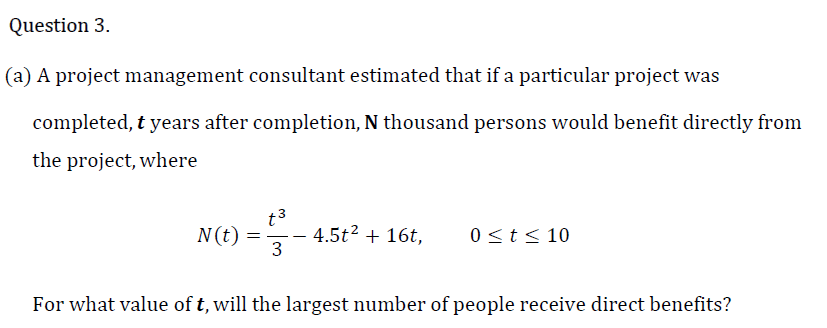A clothing manufacturer makes trousers, skirts and blouses. Each trouser requires 20 minutes of cutting time, 60 minutes of sewing time and 5 minutes of packaging time. Each skirt requires 15 minutes of cutting time, 30 minutes of sewing time and 12 minutes of packaging time. Each blouse requires 10 minutes of cutting time, 24 minutes of sewing time and 6 minutes of packaging time. The amount of time available for cutting, sewing and packaging is 115 hours, 280 hours and 65 hours respectively. Using either the Inverse Method or the Cramer’s Rule, determine how many of each type of clothing should be made to use all available labor hours?
A clothing manufacturer makes trousers, skirts and blouses. Each trouser requires 20 minutes of cutting time, 60 minutes of sewing time and 5 minutes of packaging time. Each skirt requires 15 minutes of cutting time, 30 minutes of sewing time and 12 minutes of packaging time. Each blouse requires 10 minutes of cutting time, 24 minutes of sewing time and 6 minutes of packaging time. The amount of time available for cutting, sewing and packaging is 115 hours, 280 hours and 65 hours respectively. Using either the Inverse Method or the Cramer’s Rule, determine how many of each type of clothing should be made to use all available labor hours?
Chapter1: Making Economics Decisions
Section: Chapter Questions
Problem 1QTC
Related questions
Question
Please answer question 3 a and b
b.A clothing manufacturer makes trousers, skirts and blouses. Each trouser requires 20 minutes of cutting time, 60 minutes of sewing time and 5 minutes of packaging time. Each skirt requires 15 minutes of cutting time, 30 minutes of sewing time and 12 minutes of packaging time. Each blouse requires 10 minutes of cutting time, 24 minutes of sewing time and 6 minutes of packaging time.
The amount of time available for cutting, sewing and packaging is 115 hours, 280 hours and 65 hours respectively. Using either the Inverse Method or the Cramer’s Rule, determine how many of each type of clothing should be made to use all available labor hours?

Transcribed Image Text:Question 3.
(a) A project management consultant estimated that if a particular project was
completed, t years after completion, N thousand persons would benefit directly from
the project, where
t3
4.5t2 + 16t,
3
N(t)
0<t< 10
For what value of t, will the largest number of people receive direct benefits?
Expert Solution
This question has been solved!
Explore an expertly crafted, step-by-step solution for a thorough understanding of key concepts.
Step by step
Solved in 3 steps with 4 images

Knowledge Booster
Learn more about
Need a deep-dive on the concept behind this application? Look no further. Learn more about this topic, economics and related others by exploring similar questions and additional content below.Recommended textbooks for you


Principles of Economics (12th Edition)
Economics
ISBN:
9780134078779
Author:
Karl E. Case, Ray C. Fair, Sharon E. Oster
Publisher:
PEARSON

Engineering Economy (17th Edition)
Economics
ISBN:
9780134870069
Author:
William G. Sullivan, Elin M. Wicks, C. Patrick Koelling
Publisher:
PEARSON


Principles of Economics (12th Edition)
Economics
ISBN:
9780134078779
Author:
Karl E. Case, Ray C. Fair, Sharon E. Oster
Publisher:
PEARSON

Engineering Economy (17th Edition)
Economics
ISBN:
9780134870069
Author:
William G. Sullivan, Elin M. Wicks, C. Patrick Koelling
Publisher:
PEARSON

Principles of Economics (MindTap Course List)
Economics
ISBN:
9781305585126
Author:
N. Gregory Mankiw
Publisher:
Cengage Learning

Managerial Economics: A Problem Solving Approach
Economics
ISBN:
9781337106665
Author:
Luke M. Froeb, Brian T. McCann, Michael R. Ward, Mike Shor
Publisher:
Cengage Learning

Managerial Economics & Business Strategy (Mcgraw-…
Economics
ISBN:
9781259290619
Author:
Michael Baye, Jeff Prince
Publisher:
McGraw-Hill Education